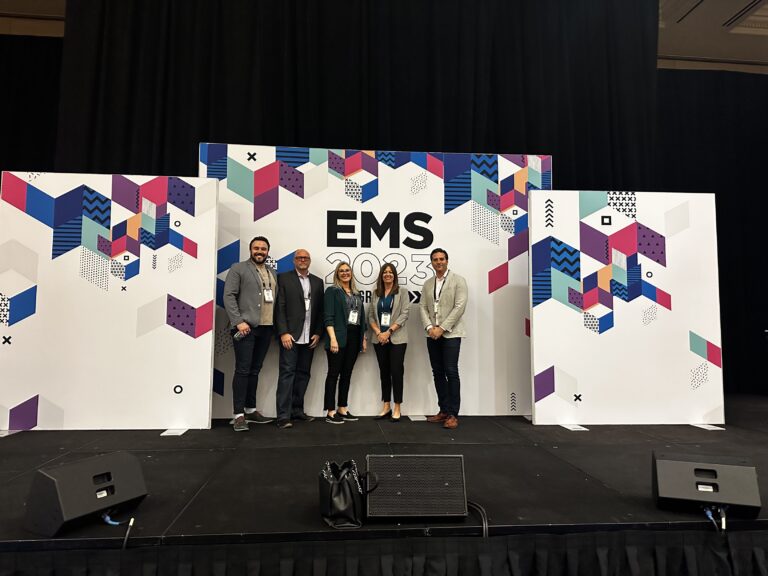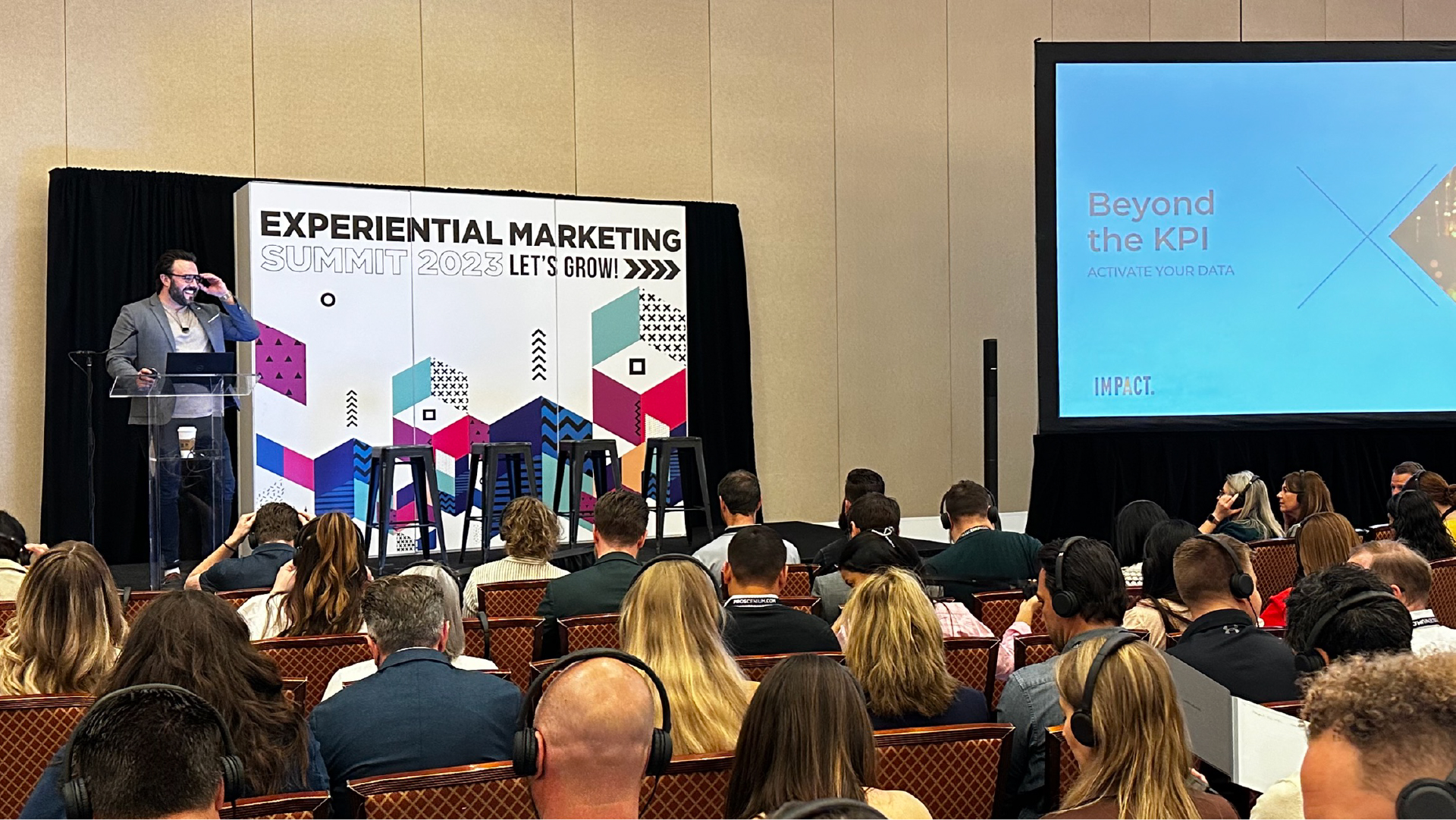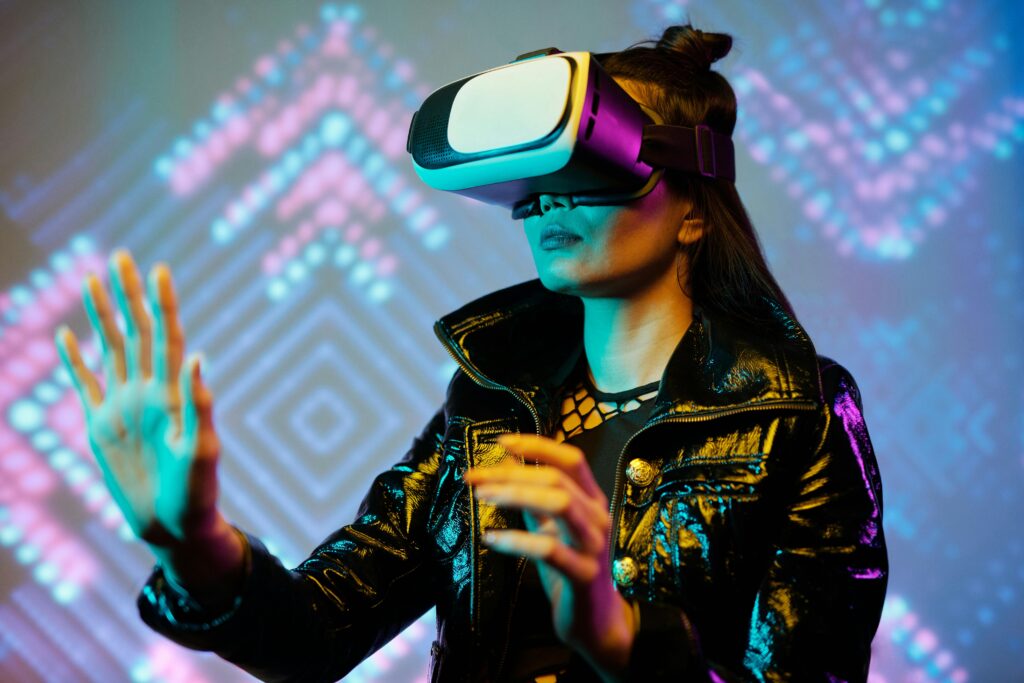Every year, the Experiential Marketing Summit is one of the industry’s most anticipated events. Bringing together the top minds and creators of brand experiences, this event delves into what’s next—addressing challenges and identifying opportunities that will empower event marketers to thrive in a continually changing business landscape. This year’s event, which took place from May 9–11 in Las Vegas, was no different. Robynne Weaver, VP of Client Service at Impact XM, experienced 2023 Experiential Marketing summit first-hand this year and noticed some continuous themes addressed throughout the event.

Storytelling Drives Engagement
In a workshop hosted by The Moth, attendees explored the value of storytelling. On its own, data can be easily forgotten. However, when wrapped in a story, people are 22 times more likely to remember a specific data point! Still, crafting a compelling story requires 5 essential components:
- Story Arc: An effective story takes you on a journey through challenges and triumphs. In the end, it should leave you with a new perspective.
- Stakes: A story should make you feel like there’s something at stake, speak to what you want, and convey why it’s important to you.
- Theme: More than a moral or lesson, the theme helps you to identify what your story is about so you can leave out extraneous details and tangents that can dilute the message.
- Show and Tell: Stories need to strike the right balance between telling and showing. Tell to move the story forward and use sensory descriptions to show when a “moment of change” is approaching. This can slow the pace to make the audience feel the shift.
- Authenticity: Don’t hide the story behind a speech, presentation, or stand-up comedy. Tell a story authentically and don’t rely on notes to let yourself shine. Present your story as the backbone of your event marketing experience to drive traffic into your booth.
Spotlight on Sustainability
According to a 2022 Gallup poll, U.S. public concern about the quality of the environment has been nearing a two-decade high for the past seven years. When it comes to event marketing, there are many sources of carbon emissions to factor in. The bulk—70% to 90%—is attributed to air travel to and from the event. However, the hosting venue’s energy source, sourcing decisions for materials and fabrication, food and beverages, and waste factor in as well. Some of these issues can be mitigated by recycling and composting in the host venue and city, responsible sourcing, or seeking venues that utilize clean energy sources.
Leveraging Artificial Intelligence
We’re seeing an explosion of artificial intelligence (AI) tools that event marketers can leverage for unique purposes. Midjourney is an AI tool that generates images from natural language descriptions. This tool can be used in the environmental design process to inspire and visualize experiential spaces. Other AI tools, like ChatGPT, can be used in the copywriting and marketing processes to generate content for your social posts, blogs, email campaigns, and attendee communications.
The Future of the Event Marketing Agency
The role of the agency continues to evolve as new technologies emerge and the business environment continues to change. As clients increasingly become marketing generalists, agencies are responding by becoming specialists in event marketing instead of a one-stop shop. Brand-side event marketers are often coming from digital or other marketing roles, but tend to lack events expertise. As a result, agencies are seeking to develop long-term, mutually beneficial relationships with clients, serving as an extension of the sales and marketing teams, rather than engaging with clients on a project basis.
There is also more to consider than the relationship between agencies and clients. By 2045, the general market will be “non-white.” This demands a focus on DEI when recruiting talent, especially as clients expect and demand diverse perspectives. Clients also expect the best talent when working with an agency, so it doesn’t matter where they are located, including remote or distributed teams.
Technology is also shaping how agencies work. With the emergence of AI tools, many agencies are looking at leveraging AI to kickstart the creative process, using it for 2D and 3D designs and mockups, copywriting and marketing deliverables, and client proposals. Some agencies show hesitation and do not allow the use of these tools. Regardless of how agencies approach AI, the new KPI is “keep people interested,” and will be an essential component of an agency’s success.

Aligning Content and Event Strategies
According to Allison Crooker, Director of Event Content at VMware, event content is “the soil” of your event. It’s the story an experience is built around. To have extraordinary content, brands need to ensure content:
- Meets the expectations and demands of attendees and is aligned with the larger event strategy and goals.
- Is unique; attendees cannot easily get it anywhere else.
- Engages and keeps attendees interested.
- Is authentic and accessible.
- Offers a valuable takeaway for attendees.
For these objectives to be met, brands need to develop a content strategy before an event strategy to ensure alignment. The event strategy should then be tailored to the content strategy to ensure consistency in how brand messaging is communicated. Lastly, the content should be focused on things that bring energy and joy to your internal team, agencies, and partners. Those who work on the event should feel the same way you want your attendees to feel after experiencing it.
Ultimately, brands and event marketers can leverage these points from the 2023 Experiential Marketing Summit to keep pace with a rapidly evolving industry. To learn how Impact XM can help you create show-stopping experiences, exhibits, and events, please feel free to contact us via [email protected]
By: Robynne Weaver,
Vice President of Client Service at Impact XM







